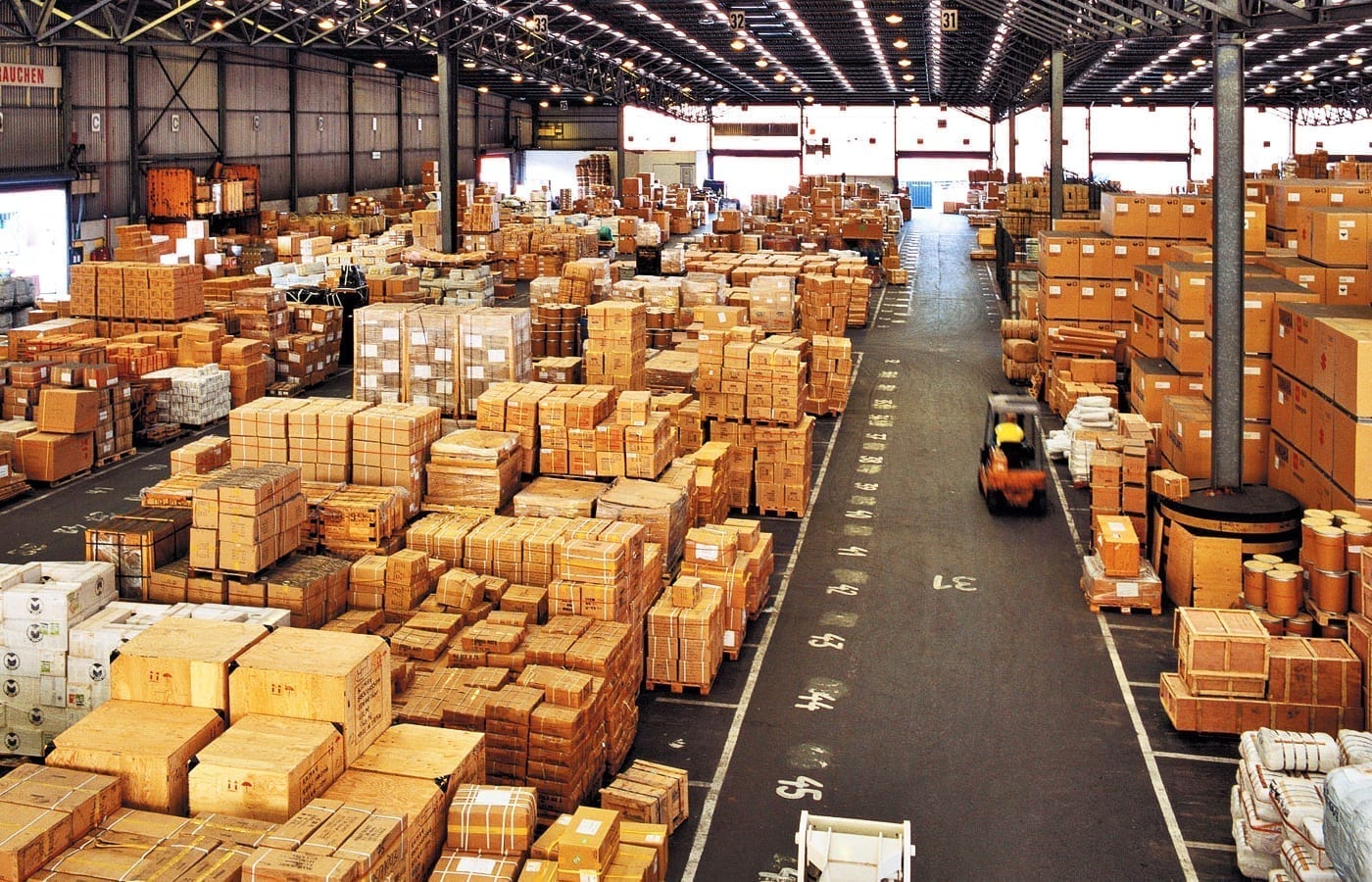CFS WAREHOUSE AND BONDED WAREHOUSE
SIMILAR POINTS BETWEEN CFS WAREHOUSE AND BONDED WAREHOUSE:
CFS warehouse and bonded warehouse Although the two warehouse systems have different functions, tasks and perform different activities, in reality these two types of warehouses still have certain things in common. Before learning the comparison table between CFS warehouses and specific bonded warehouses, you should "pocket" yourself the information about the common points between these two warehouse systems. Typical examples include:
Licensing authority: To be able to operate and operate, the business unit must be licensed by a competent authority. And the person with authority to license CFS warehouses and bonded warehouses to operate is the Director General of the General Department of Customs.

CFS WAREHOUSE
Field of activity: CFS warehouse systems and bonded warehouses are both used to serve import and export activities of goods. Accordingly, all import and export shipments must be stored in one of these two warehouse systems. Therefore, the two warehouses have a close relationship with the import-export sector in particular and Logistics in general.
Regions and areas where warehouses can be established: Must be areas close to seaports, international civil airports, and domestic import-export ports. Or it could be a road border gate, international railway station, industrial zones, high-tech zones or customs zones, etc. These are all areas prescribed by law to establish CFS warehouses and warehouses. external inspection.
COMPARISON BETWEEN CFS WAREHOUSE AND BONDED WAREHOUSE ACCORDING TO EACH CRITERIA:
| Criteria | CFS warehouse | Bonded |
| Define | CFS warehouse (Container Freight Station), also known as a retail consolidation point.
This is a warehouse system used in import and export activities for the purpose of collecting and separating LCL goods (LCL goods) to transfer to the same Container and carry out transportation activities. |
Bonded warehouse is also known as Bonded Warehouse.
This is a warehouse system built and established in the territory of Vietnam. The warehouse is separated from the surrounding area by barriers to carry out storage, preservation and other services for goods from abroad and domestic goods brought into the warehouse under a foreign warehouse lease contract. relationship between the goods owner and the warehouse owner. |
| Warehouse activities | Stored goods are packaged and arranged. Some goods may be repackaged and re-arranged while awaiting export.
Goods are divided and combined with many other shipments into one container for goods in transit, transshipment and export. Imported goods are broken down into small pieces to carry out import procedures into a country's domestic market. Pack and assemble goods into export containers to prepare for shipment to a third country. Change ownership of shipment. |
Reinforcement of goods; Classify and preserve goods according to regulations.
Split goods into many small lots or combine and combine multiple lots of goods together. Packaging for goods. Take samples of goods to provide to the warehouse management unit and carry out customs procedures. Make changes and transfer ownership of the shipment. For specialized warehouses licensed to store petroleum, chemicals, and specific goods, they can be converted and mixed without affecting the goods and the surrounding environment. Carry out import and export procedures for goods in the warehouse. |
| Goods storage time | Goods are stored at the CFS warehouse for no more than 90 days from the date they are brought to the retail collection point.
In cases where there is a legitimate reason and approval by the Director of the directly managing Customs Branch, the extension can be extended once for no more than 90 days. |
Goods are stored in bonded warehouses for no more than 12 months from the date they are placed in the bonded warehouse.
In cases where there is a legitimate reason and is approved by the Director of the Customs Department directly managing it, it can be extended again but not to exceed 12 months. |
| Type of storage | Imported goods but not yet cleared through customs procedures.
Exported goods have completed customs declaration procedures or are in the process of completing declaration registration and are brought into the CFS warehouse for physical inspection. |
Goods are waiting for procedures to be completed to be eligible for distribution into the Vietnamese market.
Goods in transit are stored in Vietnamese warehouses and prepared to carry out export procedures to other countries. Domestic goods have completed customs procedures and are ready to be exported to other countries. Goods have expired and must be re-exported. Goods must be re-exported according to regulations. |
| Customs procedures | For goods at retail consolidation points, two basic types of customs procedures will usually be carried out:
Customs procedures for exported goods. Customs procedures for imported goods. |
For goods stored in bonded warehouses, there will usually be 5 types of customs procedures:
Customs procedures for goods from foreign countries imported into bonded warehouses. Customs procedures for goods coming from non-tariff zones or inland and entering bonded warehouses. Customs procedures for goods exported from bonded warehouses to outside countries. Customs procedures for goods exported from bonded warehouses and imported into the inland or non-tariff zone. Customs procedures for goods exported from this bonded warehouse to be transferred to a warehouse system in another area. |
COMPARE THE ADVANTAGES AND DISADVANTAGES OF CFS WAREHOUSES AND BONDED WAREHOUSES
| Criteria | CFS warehouse | Bonded |
| Advantage | Save costs on export procedures: For retail shipments sold by business owners to many customers in the same country, the CFS warehouse is a place to help collect retail shipments into large shipments to be packaged together in one container. . Thanks to that, it helps business owners save costs on export procedures.
Save shipping costs: CFS warehouse helps retail shippers meet and combine goods together when transporting. Therefore, transportation costs for goods are also significantly reduced. |
Goods of domestic enterprises that are imported from abroad and are waiting for distribution into the domestic market when stored in bonded warehouses will not have to pay import tax.
Warehouse owners perform tasks at bonded warehouses such as arranging and classifying goods sent by businesses, reducing costs and implementation time. At the same time, they can easily track goods stored in the warehouse through the management system. |
| Defect | Goods transferred from the border gate to the CFS warehouse or to the CFS warehouse outside the border gate and vice versa must go through customs procedures according to regulations. The time taken to complete the procedure quickly or slowly depends on how the declarant completes the customs declaration steps.
If goods at the CFS warehouse are overdue 90 days from the date of warehouse receipt and are not extended, then upon expiration, if the goods owner has not yet come to receive the goods, the goods will be liquidated according to regulations. Goods transferred to the CFS warehouse and activities and services here are subject to inspection and supervision by competent authorities. |
All types of exported and imported goods when stored in bonded warehouses must undergo customs procedures related to the status of the goods according to the provisions of law. Therefore, the time to complete the customs clearance process for goods may be prolonged.
If goods in the warehouse exceed the prescribed storage period of 12 months and are not extended, then at the end of the storage period, if the owner does not come to receive the goods and move them from the warehouse, the goods will be liquidated according to regulations. All activities related to goods carried out at bonded warehouses are under the supervision of the Customs Authority. |


